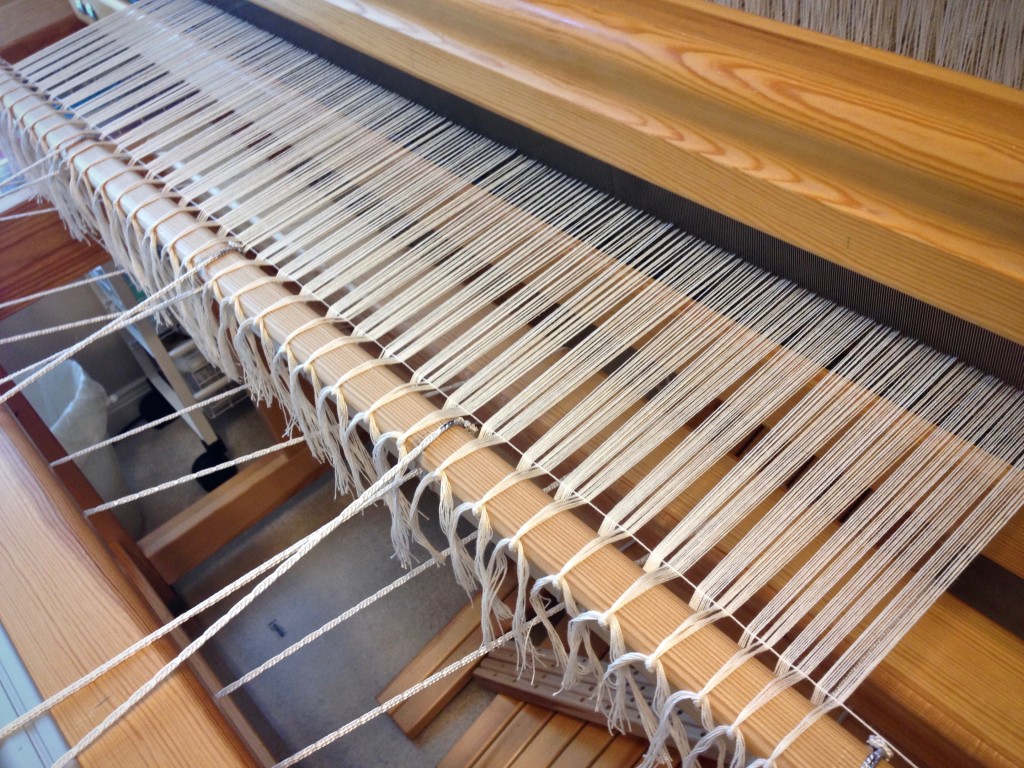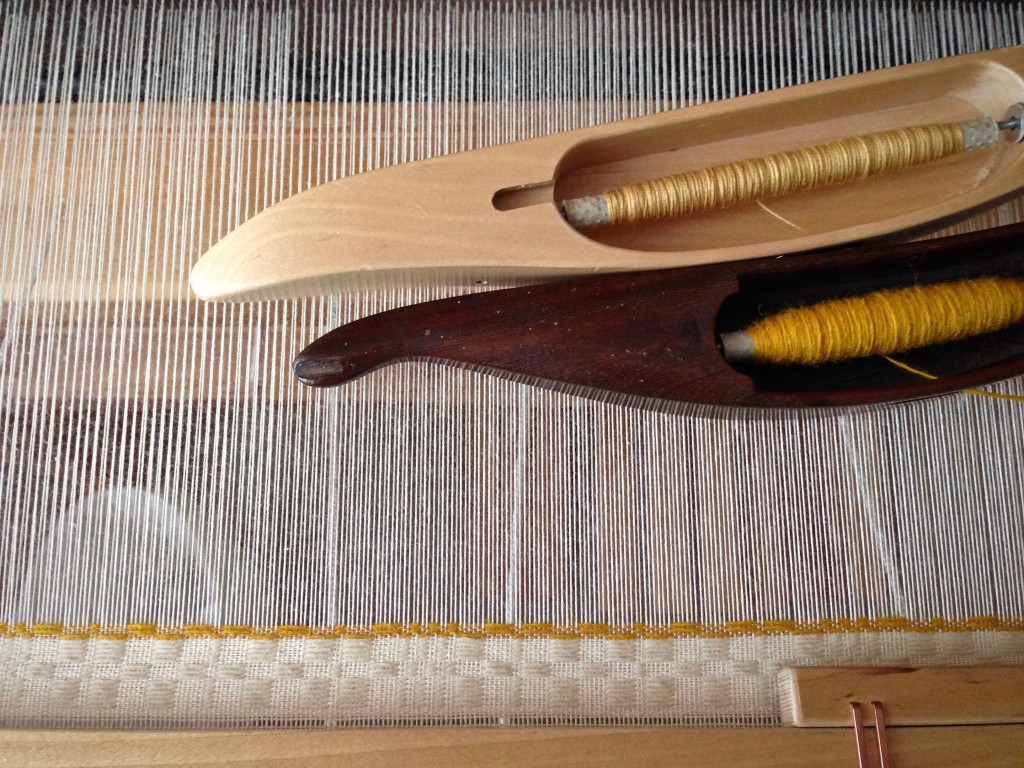Two fingers gently test the resistance of the threads, from the center of the warp, moving outwards to the right, and to the left. This is how I evaluate the warp tension. I don’t rush; and I give the effort all my attention. Weft rep, where the ground weft almost completely covers the warp, is especially susceptible to hills and valleys from uneven warp tension. After I have made several tension adjustments, I tie on the leveling string. Next is tying up lamms and treadles, and winding quills. Then, the joy of weaving this monksbelt begins!

The ability to feel unevenness in warp tension is a learned practice. Being attentive is half the battle; and patience is the other half. Taking time on the front end reduces correction time after weaving has begun.

Skilled listening is a learned practice, too. Listening is more than hearing, isn’t it? Pay attention to how you listen. It matters. It takes a gentle touch to listen with a heart of understanding. When we listen with an unbending heart, we only hear what we want to hear. Patience on the front end results in fewer corrections later.
May you hear and be heard.
Gently,
Karen

Hi Karen: My , at the time 6yo, daughter asked me one day to listen to her with my eyes. I was unpacking her backpack and really not listening to the telling of the days events. She was right. giving her my Full attention right then was most important. Weaving teaches patience and really seeing not just the over all finished product, but the tiny one thread flaws that must be corrected to make the whole right. Again your method is new to me and fascinating to see, thanks for doing this. linda
What a sweet story with great insight. Children teach us so many things! I’m glad that weaving teaches patience, because for most of us, that doesn’t come naturally.
Love,
Karen
Between this post and the previous one, there is no information on how you tie on to the front apron rod. It doesn’t appear to be a method that I’ve seen before and am struggling to understand how you did it. Also, what is the “leveling string” and what is its purpose?
Hi Ingie, Thank you for asking. The method of tying on is closely linked to the leveling string. Here’s the link to a post that explains the leveling string, and also talks about how the knots are tied. —
Tools Day: Leveling String
The books I mention in the post also detail this method of tying on in more detail. The knot I use is one I specifically learned from Becky Ashenden at Vävstuga. It is covered thoroughly in Becky’s book.
Happy weaving,
Karen